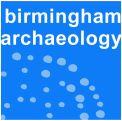Thorswood Nature Reserve, North Staffordshire. Archaeological Desk-Based Assessment and Survey
Birmingham Archaeology, 2017. https://doi.org/10.5284/1046292. How to cite using this DOI
Data copyright © University of Birmingham unless otherwise stated
This work is licensed under the ADS Terms of Use and Access.
Primary contact
Historic England
1 Waterhouse Square
138-142 Holborn
London
EC1N 2ST
UK
Tel: 01793 414700
Fax: 01793 414707
Resource identifiers
- ADS Collection: 2882
- DOI:https://doi.org/10.5284/1046292
- How to cite using this DOI
Introduction

An archaeological desk-based assessment and survey were carried out by Birmingham Archaeology at the Thorswood Nature Reserve, near Stanton, North Staffordshire (centred on NGR SK 1140 4700). The assessment and survey were carried out to provide archaeological information about the study area prior to its utilisation as an educational resource. The work was carried out during September 2003 on behalf of the Staffordshire Wildlife Trust. The assessment examined the available documentary and cartographic evidence, whilst the walkover survey was conducted in order to identify any features of potential archaeological or historical significance.
Forty-three potential archaeological sites were identified by the walkover survey, several of which have already been documented. Three Bronze Age bowl barrows are present within the study area and these are Scheduled Ancient Monuments (SAM Nos. 1358, SAM No. 13581 and 13582). A Late Bronze Age gold bracelet has been recovered from the study area and a prehistoric worked flint scatter has also been recorded within the study area. This suggest that there is considerable potential for the presence of below-ground archaeological features of prehistoric data within the study area. A number of mound earthworks were also recorded, some of which were at one time thought to be possible barrows. It now seems probable that these features are associated with post-medieval mining activity.
The survey identified twenty-nine post-medieval mining features (mainly mine shafts, shaft mounds and spoil heaps). The documentary sources indicate that the mines at Thorswood were in operation from the late 17th century through to 1860, and the they were mined for copper, lean, zinc and other minerals. They were at their most productive just before the mid-18th century and were probably not very profitable after this data. The mines were periodically abandoned at times before being reopened and reworked.







